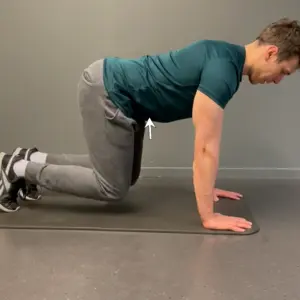6 Mistakes People Make When Training Core Stabilization
We’ve all heard that core stabilization training is a great way to activate the muscles in the center of our body, which will help us prevent or alleviate back pain, improve sports performance, and generally build a stronger and more stable foundation that we can further strengthen with other exercises.
However, core stabilization training can easily be practiced incorrectly. In this text, I’ve outlined the most common mistakes I’ve seen in people who are fans of core stabilization training.
Breathing
Breathing is closely related to core activity. For the core to be stable, it’s necessary to avoid diaphragmatic breathing during core exercises. Many make the mistake of breathing deeply while holding a plank, for example.
Therefore, this is the first and fundamental mistake people make when training core stabilization.
Tucking in the Belly Button
When you train core stabilization, you must tuck your belly button towards your lumbar spine. This will lead to the activation of the deep abdominal muscle (transversus abdominis), which is one of the most important muscles that stabilize the core, including the lumbar spine.
However, most people in the gym are not aware of this information and therefore do not pay attention to this crucial detail.
Doing Only Static Exercises
For most people, the first thought of core stabilization is static movements like plank, side plank, etc. In practice, that’s just a small part of what can be training for core stabilization.
Mainly, when you perform any movement with your arms or legs that requires the rest of the body to remain stable, it requires good core stabilization in some way.
This means that if you’re only doing planks for core stabilization, you’re missing out on a lot and your training is not complete.
Neglecting the Posterior Chain of Core Muscles
The first thought about core muscles is the abdominal muscles, while few think of the back muscles that work hard to maintain your upright posture, among other things.
These are the erector spinae muscles. If you only train abdominal muscles and ignore these muscles, it means you’re slowly but surely creating a weak point in your body.
Not Stabilizing the Core When Doing Squats, Deadlifts, etc.
This refers to recreational gym-goers who are not familiar with proper movement techniques for squats, deadlifts, etc. People who do not pull in and tighten the stomach, adjust the position of the pelvis, and adapt their breathing during these movements increase their chances of injury.
Not stabilizing the core properly can lead to greater strain on other, much more sensitive structures in the back such as ligaments, joints, and even the discs between the spinal vertebrae.
Doing Only Planks
Stop doing only planks when you train your core. Instead, find exercises that are most similar to your sport or movement in which you want to be strong and stable. If your goal is to strengthen the core to reduce back pain, I advise you to consult with your physiotherapist before any exercise!
Thank you for reading, I hope you’ve learned something new. If you need help creating an exercise program, sign up to train with me.

